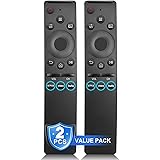
Many people spend a lot of time and money on home entertainment systems that provide a cinematic experience. Whether they’re converting a basement, spare bedroom or media room, these installations can bring a new level of enjoyment to family life and add value to the house. However, there are a few things to keep in mind to ensure that your home theater project ends up being everything you hoped it would be.
For example, a high-quality TV and surround sound system can only go so far if viewers are constantly moving in front of the screen. In addition, if your guests and family members are always interrupting movies with phone calls or snacks, the movie watching experience can become annoying and distracting for everyone. A dedicated home theater space allows you to sit back, relax and enjoy the film or game without distractions.
A high-quality television, surround sound and comfortable seating are essential to a home theater. But you should also consider other important factors when designing a space, such as lighting and sightlines.
One of the biggest mistakes homeowners make is hanging a screen directly across from a window, which dramatically reduces image quality. If you plan to use a front projection screen, you should mount it on the largest wall in your media room, away from windows and other light sources. This will enable you to get a bright, crisp image with high contrast and saturation levels. If you’re using a flatscreen TV, a dark gray wall will create the best background for your display.
If you’re planning to install multiple rows of home theater seating, sightlines are vitally important. To maximize the seating arrangement’s effectiveness, you need to calculate the optimal viewing distance for each tier of seats. We have an article that helps with this process, and you can also read up on riser options in the HT Guru Forum.
In a home theater, it’s important to pre-wire all equipment hub locations. This will eliminate the need for later wiring upgrades. It’s especially important to run CAT5 control wire from the equipment hub to each speaker location, so that you can operate the speakers with your RF remote. You should also have a CAT5 wire running from the equipment hub to the attic, where the projector will be mounted. This will allow you to access the projector with your RF remote even when the lights are on.
Lighting is an often overlooked element of a home theater, but it can make or break the overall viewing experience. Ideally, you should include recessed lighting in the ceiling and sconces on each side of the room. It’s best to use low-wattage halogen bulbs, as these are the most energy-efficient. Adding a dimmer switch to your equipment hub will give you a complete set of control options for the lighting in your media room, including the ability to dim your projector when you start playing a movie. This will create a real cinematic experience and help to create the right mood for your movie watching.









